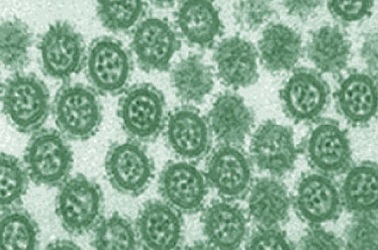BREAKING NEWS! Chinese Scientists Warns Of Emerging Threat From New H9N2 Avian Influenza Strains With Antigenic Drift!
Thailand Medical News Team Aug 19, 2023 1 year, 8 months, 1 day, 11 hours, 1 minute ago
Poultry Industry and Public Health at Risk as New H9N2 Clade Emerges
Influenza News: In a startling revelation, Chinese scientists have issued a warning regarding the emergence of a new designated clade, designated as clade 16, within the H9N2 subtype of avian influenza virus.

This new clade has shown significant antigenic drift in the hemagglutinin gene, raising concerns about the effectiveness of current prevention strategies, including vaccination.
The findings of this study, conducted by experts from the College of Veterinary Medicine at Yangzhou University in Yangzhou, Jiangsu, China, shed light on the complex evolution of the H9N2 avian influenza virus and its potential implications for both the poultry industry and public health.
H9N2 Avian Influenza: A Persistent and Pervasive Threat
H9N2 avian influenza viruses (AIVs) have been a growing concern globally due to their potential to cause widespread outbreaks and even pandemics. According to
Influenza News reports, these viruses were first isolated from turkeys in the United States in 1966 and have since become endemic in various regions, particularly in Asia, Eurasia, the Middle East, and Africa. In China, the first case of H9N2 was reported in Guangdong in 1994, marking the beginning of its prevalence in the country. Over the years, these viruses have continued to pose a significant threat to both the poultry industry and public health.
Vaccine Challenges and Antigenic Drift
Vaccination has been a cornerstone of efforts to control H9N2 AIVs in China since 1998. However, the effectiveness of vaccines has been consistently undermined by the emergence of genetic and antigenic variants of the virus. Antigenic drift, characterized by changes in the antigenic properties of the virus due to mutations in the hemagglutinin (HA) gene, has been a major hurdle in preventing the spread of the virus. Despite the use of inactivated vaccines, the rapid mutation rate of H9N2 viruses has led to the persistence of outbreaks in vaccinated flocks.
A Comprehensive Study Unveils Clade 16
To gain a deeper understanding of the genetic and antigenic characteristics of H9N2 viruses in China, the study team conducted an extensive analysis. They collected and analyzed 70 HA sequences of H9N2 isolates from poultry, as well as 7358 sequences from online databases spanning the years 2010 to 2020.
Additionally, they included 15 sequences from early reference strains for comparison. The study's findings unveiled the emergence of a new designated clade, clade 16, in April 2012.
Antigenic Changes and Implications
The emergence of clade 16 brought about significant changes in the antigenic properties of the virus. Antigenic Cartography analyses revealed the classification of strains into three distinct antigenic groups: Group 1, Group 2, and Group 3. Notably, the majority of strains in Group 3 (88.2%) belonged to clade 16, while most strains in Group 2 (
89.7%) were associated with clade 15. This divergence in antigenic properties underscores the challenges posed by the evolving virus variants and their potential impact on vaccine efficacy.
Genetic Basis of Antigenic Drift
Genetic analysis of the clade 16 strains identified 11 coevolving amino acid substitutions, primarily located at antigenic sites. These substitutions were found to be associated with the observed antigenic differences between clade 15 and clade 16. This genetic insight provides valuable information about the mechanisms underlying the antigenic drift and highlights potential molecular markers that contribute to the emergence of new antigenic variants.
Continued Prevalence and Urgent Need for Action
Despite efforts to control H9N2 AIVs, the study's findings indicated the continued prevalence of these viruses in China, raising concerns about the potential failure of current vaccination strategies. The widespread circulation of H9N2 and the emergence of new antigenic variants emphasize the urgent need for ongoing surveillance and the timely updating of vaccine strains to effectively combat this persistent threat to the poultry industry and public health.
Conclusion: A Call to Action
In conclusion, the emergence of a new designated clade (clade 16) within the H9N2 subtype avian influenza virus with significant antigenic drift in the hemagglutinin gene underscores the evolving nature of this virus and its potential impact on both poultry and human health. The study's comprehensive genetic and antigenic analyses provide a crucial foundation for understanding the complexities of H9N2 evolution and the development of effective prevention and control strategies. It is imperative that stakeholders in the poultry industry, veterinary professionals, and public health authorities heed this warning and take proactive measures to address this emerging threat. The ongoing monitoring, surveillance, and adaptation of vaccination strategies are essential to mitigate the potential consequences of the antigenic drift observed in clade 16 of the H9N2 avian influenza virus.
The study findings were published in the peer reviewed journal: Emerging Microbes and Infections (Taylor & Francis).
https://www.tandfonline.com/doi/full/10.1080/22221751.2023.2249558
For the latest
Influenza News, keep on logging to Thailand Medical News.
Read Also:
https://www.thailandmedical.news/news/h9n2-news-taiwan-reports-outbreak-of-h9n2-bird-flu-on-kinmen-island-with-4551-chickens-culled-and-21-people-under-observation-for-possible-infection
